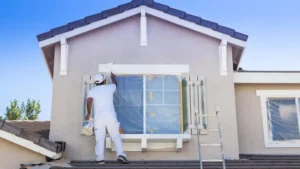Paving Adelaide bricks add classic charm to walkways, patios and driveways while being easy to install in various decorative patterns.
They are also durable and require little upkeep; being sealed correctly they provide added protection from rain, traffic, and oil spills.
Easy to Install
Brick pavers are an ideal choice for novice landscapers. Easy to lay and give outdoor spaces such as patios a classic aesthetic, they can also be used to create herringbone or basket weave patterns for an informal touch.
Brick pavers boast timeless beauty unrivaled by concrete pavers. Due to this, they continue to be widely used both publicly and privately for the construction of sidewalks, walkways and patios.
Clay bricks are created by firing them in a kiln, creating various colors and textures in the bricks as they bake. Once baked, these bricks come in many sizes with gently rounded corners or tumbled textures molded or tumbled by machine or by hand forming. Finally, after curing is completed they must be sealed regularly in order to protect the surface against dirt, weathering and fading; sealing can be performed both within your own home as well as at an outside sealer’s facility to maintain their best appearance.
Durable
Concrete paver bricks must be sealed on a regular basis in order to stop weeds from sprouting between them and stain-resistant paving materials from staining, such as stone pavers. Brick pavers do not fade over time and any damaged or chipped ones can easily be replaced.
Paving bricks come in many shapes and sizes, from traditional rectangles to bull nose, boardwalk and interlocking octagonal pavers. Their versatility can help you create garden pathways, border flower beds, outline driveways or define patios.
Clay paver bricks offer natural weather resistance and can tolerate heavy foot traffic as well as light vehicle traffic without cracking due to freeze/thaw conditions, making them the ideal outdoor surface material. Unfortunately, it does become susceptible to freeze/thaw conditions occasionally causing them to crack under pressure from freezing temperatures; this poses a problem when creating long-lasting outdoor surfaces. Luckily, many manufacturers have created products which help mitigate this issue by adding an extra layer of protection around each individual brick.
Low Maintenance
Brick paving isn’t as slippery as concrete, making it easier for walkers. Many older streets and sidewalks feature brick pavement that has withstood foot traffic, revolutions, parades, etc. over decades.
Sweeping pavers daily helps eliminate soil and dust accumulation and avoid stains, while regularly using your preferred cleaning solution is also wise. Vinegar is a natural disinfectant which works wonders against mildew and mold growth, easily found in kitchen cabinets.
If you opt for using a pressure washer, make sure that you adhere to its specific directions; too much force could remove sand meant to remain between pavers. After an effective washing session, be sure to fill any empty spaces with new sand–perhaps polymeric sand which binds better and lasts longer would be preferable?
Affordable
Brick pavers may cost 15-20% more than concrete but are durable enough to outlive its lifespan and offer timeless style. Furthermore, their materials can be renewable or recyclable, which makes them environmentally-friendly. As opposed to asphalt which erodes over time, bricks remain stain-resistant for generations and require only occasional cleaning and occasional sanding maintenance – unlike asphalt which wears down over time and wears away over time.
Concrete and brick pavers can both be used in a range of designs, but how they’re installed will have an effect on their final result. Brick pavers typically come in rectangular shape with limited sizes due to kiln firing processes; this limits how you lay patterns while increasing labor costs; however they can be installed using running bond or herringbone patterns for stunning outdoor living spaces – less likely to crack under pressure or freeze/thaw conditions than concrete pavers!


